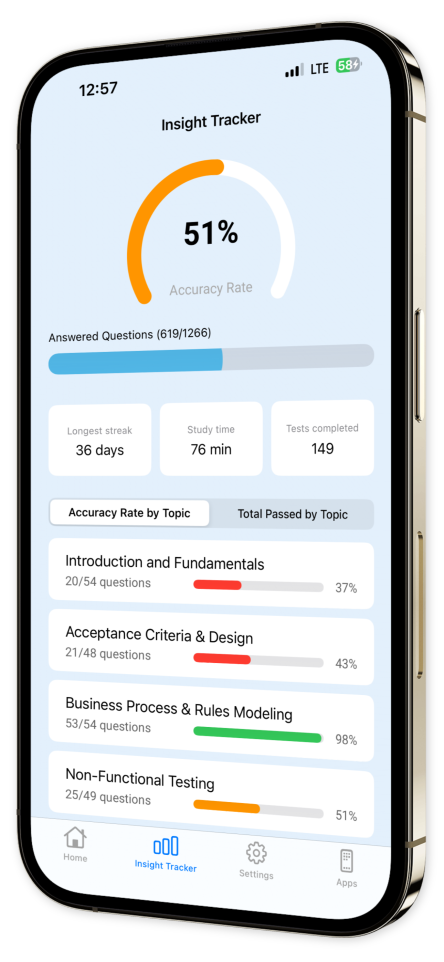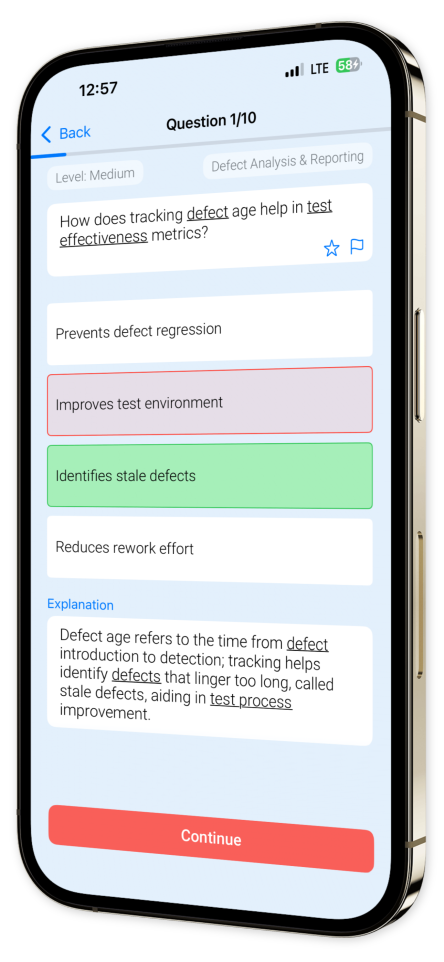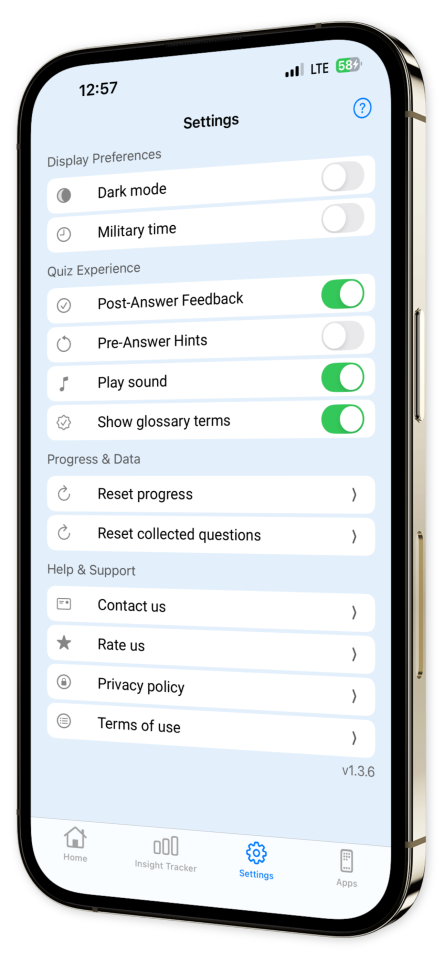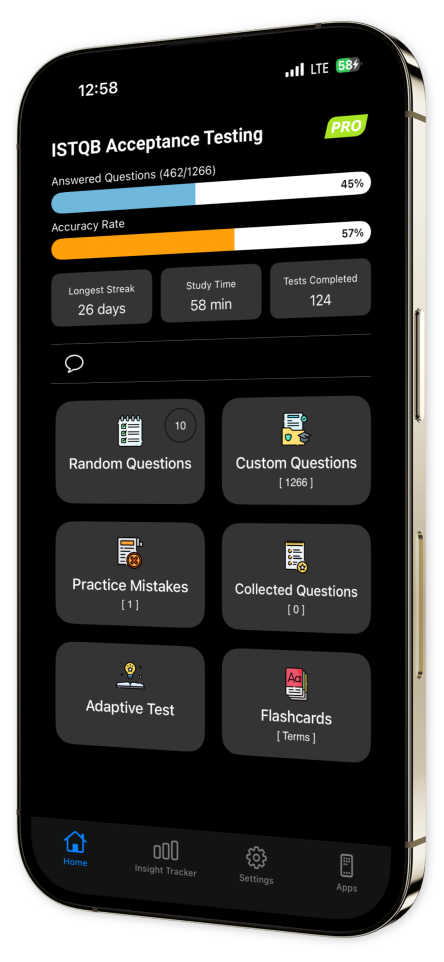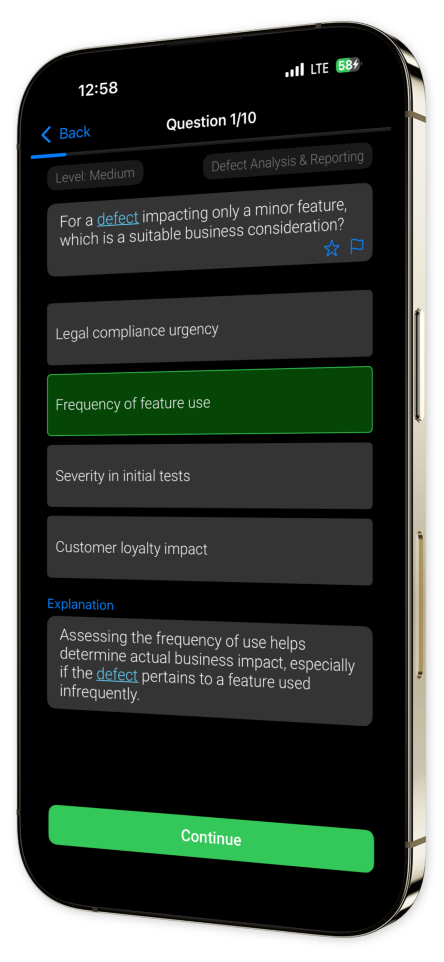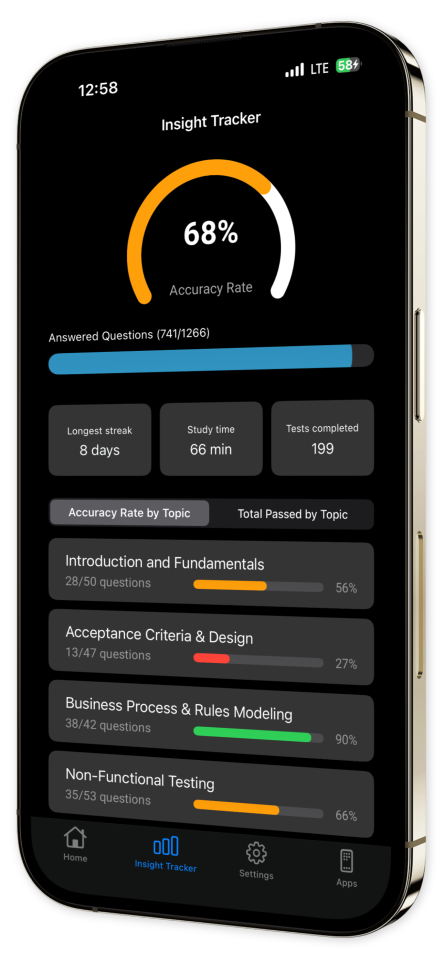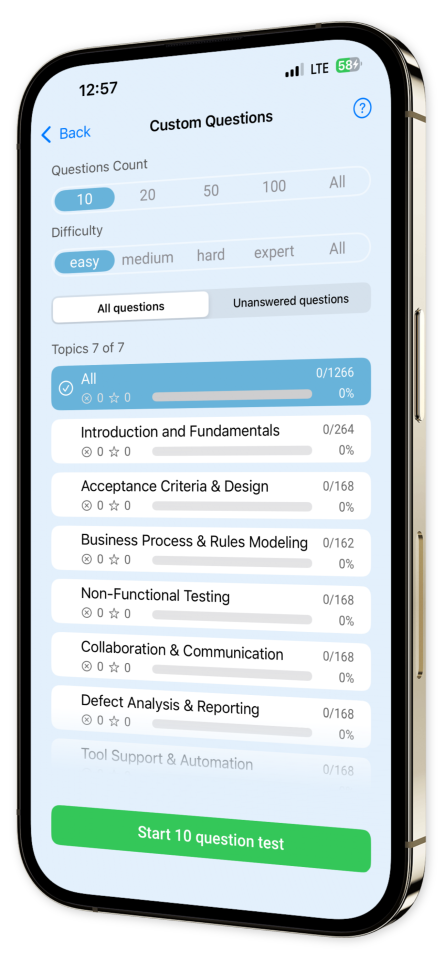
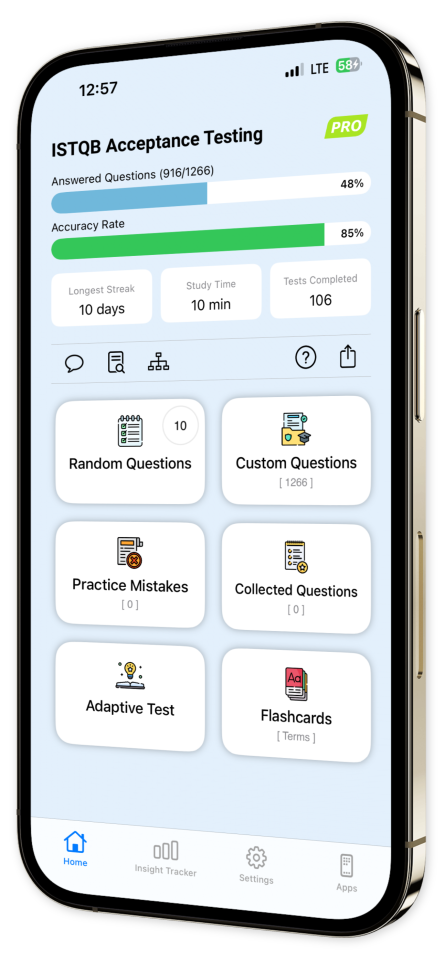
ISTQB Acceptance Testing iOS
Master the art of software quality assurance with the ISTQB Acceptance Testing app!
Dive into a world of exhaustive learning and get yourself ready for the ISTQB Acceptance Testing certification exam with ease and efficiency.
Designed specifically for future quality assurance champions, our app introduces you to a rich array of practice questions meticulously covering every critical facet of ISTQB Acceptance Testing.
Each query is accompanied by an in-depth explanation, ensuring you gain valuable insights and consolidate your understanding effectively.
Key Features:
- Extensive Question Bank: Immerse yourself in hundreds of comprehensive practice questions, each crafted to cover key topics vital for your exam readiness.
- In-Depth Explanations: Delight in detailed explanations that come with each question, refining your knowledge and aiding retention.
- Custom Test Creation: Tailor your learning experience with the ability to create personalized quizzes by choosing specific topics and question types, focusing on areas where you need the most practice.
- Progress Tracking: Stay motivated and monitor your advancement effortlessly across time thanks to our dynamic progress tracking tools.
- Offline Access: Study without boundaries, wherever you are, even sans internet connection for ultimate on-the-go learning.
- User-Friendly Interface: Experience an intuitive and aesthetically designed app interface that helps to keep your focus sharp and undisturbed, mastering content seamlessly.
Download the ISTQB Acceptance Testing app today and embark on a journey towards success in the most efficient manner available!
Engage in a smarter way to ace your exams.
Transform your preparation strategy now.
Become an ISTQB Acceptance Testing certification holder with confidence!
Your bright future in software testing starts here.
Content Overview
Explore a variety of topics covered in the app.
Example questions
Let's look at some sample questions
Why is it important to involve users in the acceptance testing process?
A) Users can provide insights into technical optimizations needed in the codebase.B) Users can help identify usability issues and validate that the system meets their needs.C) Users are responsible for documenting all discovered defects.D) Users can ensure that all functional requirements are met without error.
Involving users in the acceptance testing process is important because they can identify usability issues and validate that the system meets their actual needs and expectations, which may not be fully captured in written requirements.
Which aspect of process models is most beneficial for validating complex business logic during acceptance testing?
The aesthetic appeal of the model diagrams.The detailed representation of decision points and conditions.The total number of processes documented.The use of multiple colors in the diagrams.
Detailed representation of decision points and conditions in process models is crucial for validating complex business logic, ensuring that all logical paths are tested during acceptance testing.
What is an important aspect to consider for improving UX quality in use?
A) Increasing the number of features.B) Simplifying the user interface.C) Adding more complex animations.D) Extending the software's compatibility with older systems.
Simplifying the user interface can significantly enhance UX quality by making it easier for users to navigate and complete tasks efficiently, thus improving overall satisfaction.
How can facilitators manage conflicts effectively during stakeholder workshops?
A) By avoiding controversial topics altogether.B) By encouraging open dialogue and focusing on common goals.C) By allowing the most senior stakeholder to make decisions.D) By taking a vote on each issue to resolve disagreements.
Encouraging open dialogue and focusing on common goals helps in resolving conflicts by aligning stakeholders towards shared objectives, promoting collaboration, and finding mutually agreeable solutions.
What role do testers play in ensuring clear requirements during acceptance testing?
They help identify unclear or ambiguous requirementsThey design the user interface based on requirementsThey develop new features based on unclear requirementsThey optimize system performance based on requirements
Testers play a critical role in ensuring clear requirements by helping identify unclear or ambiguous requirements, which allows for clarification and more effective testing.
How should feedback be delivered during an Agile sprint to be most effective?
In lengthy emails at the end of each sprint.Through formal meetings held only once per quarter.Continuously and constructively throughout the sprint.Via anonymous surveys conducted annually.
Effective feedback in Agile should be continuous and constructive, allowing for real-time adjustments and improvements during the sprint.
In acceptance testing, why might a defect with low severity be prioritized over a high-severity defect?
Because it affects a high-profile clientBecause it was found by a senior testerBecause it was discovered firstBecause it requires less time to fix
A defect affecting a high-profile client might be prioritized to maintain client satisfaction and business relationships, even if its severity is low. This strategic decision can be critical for business success.
How does the frequency of occurrence influence defect prioritization?
It is irrelevant to prioritizationHigher frequency increases priorityLower frequency increases priorityFrequency affects only cosmetic defects
Higher frequency of occurrence indicates that more users are likely to experience the defect, thus increasing its priority. Frequent issues can significantly affect user satisfaction and acceptance.
When preparing an acceptance testing summary report, which aspect should be emphasized?
The personal achievements of testersThe unresolved critical defectsThe number of automated test scripts writtenThe total time taken for testing
Emphasizing unresolved critical defects is crucial as it directly impacts the decision-making process regarding product release and helps prioritize defect resolution efforts.
Why is it important for a defect management tool to support multiple projects?
A. To increase the number of defects loggedB. To facilitate cross-project reporting and analysisC. To reduce the complexity of user interfacesD. To ensure all projects use the same workflow
Supporting multiple projects enables cross-project reporting and analysis, allowing organizations to gain insights into quality trends across different projects and make informed decisions.


